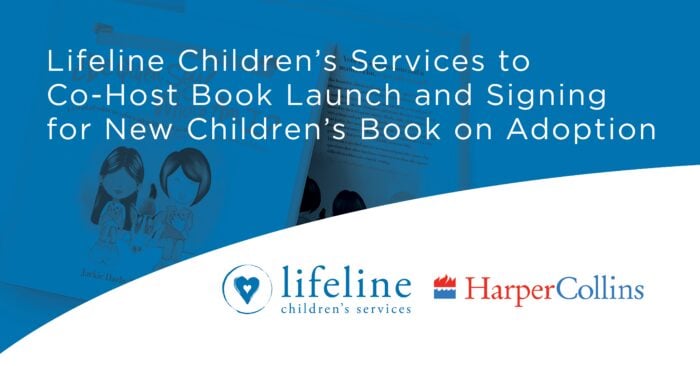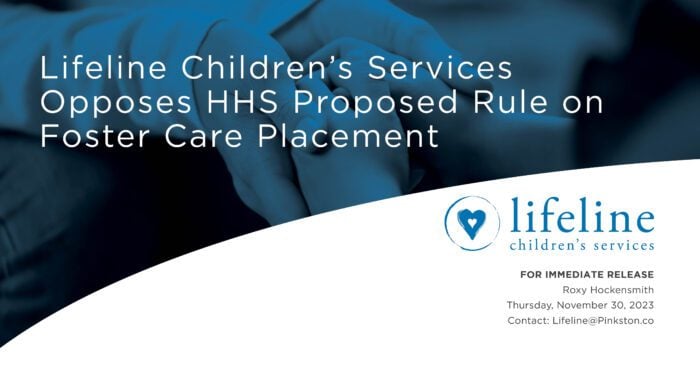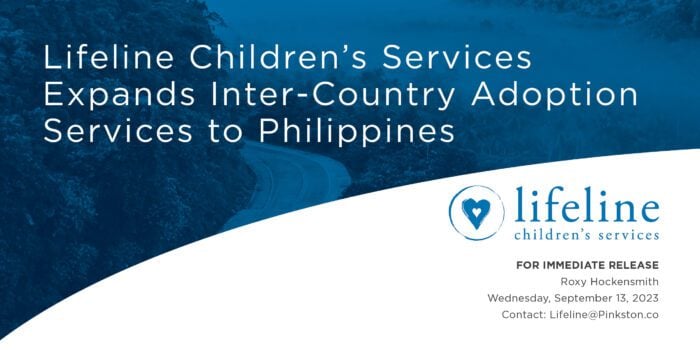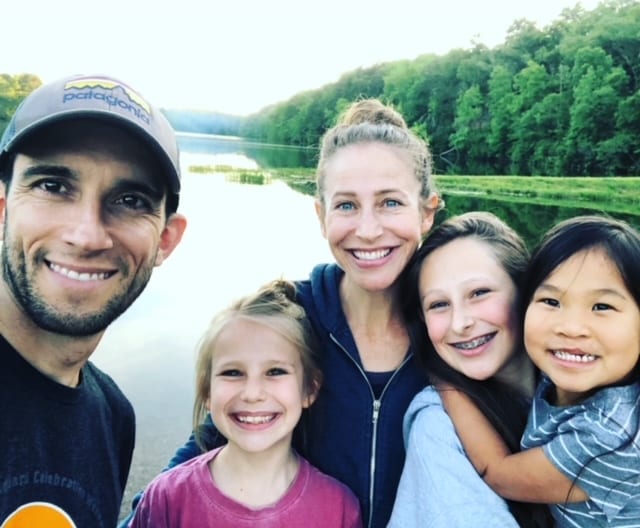More than a Photograph
By Jessica Roberts, Lifeline Mom
Our family’s journey toward adoption doesn’t begin like many of the stories we know. When my husband, Rhodes, and I were married, we didn’t have any intentional discussions about how we would like to grow our family. We weren’t like those couples that both happened to always have adoption as a part of the plan for the future. In fact, we didn’t have any conversations about what it would look like to have children because we had a rather unique beginning to our family: I had been a military widow with an infant daughter, Ava, when Rhodes and I met. Grief was part of our story from the start. And, for me, becoming a Christian was a product of that traumatic end to my first marriage. So, our marriage was a myriad of endings, beginnings, trauma, sorrow, and joy.
As we began our life together as a small family of three, Rhodes, Ava, and I soon welcomed the birth of our second daughter, Elloree. At the same time, I was also beginning my new life as a follower of Christ. God’s Word became something I couldn’t get enough of; everything about my previous worldview was rocked and I was hungry to know more of Christ in all things. This inevitably included learning about adoption. Adoption wasn’t something talked about in my home growing up. In a world of trauma and abuse, there was not much room for anything other than survival. Although my husband was raised in a loving, Christian home, his only association with adoption would have been if a family member “took in” someone to raise as part of the family. Again, the idea of entering into a formal process of identifying, caring for, and calling a child one’s own wasn’t mentioned in his childhood either. Adoption was a distant concept.
But, I read James 1:27 and the words stuck out to me like a blazing fire in the dark: “Religion that is pure and undefiled before God, the Father, is this: to visit orphans and widows in their affliction, and to keep oneself unstained from the world.” This. This is what I wanted: beautiful, pure worship before the Lord. I was a widow and was cared for by God’s lovingkindness through the man He gave to me to be my husband, but what was this? Orphans in their affliction? Those words shot deep into my heart and pulled me toward this new concept to which I hadn’t given any thought. The conviction to dive in and discover how the Lord would lead us to pursue this mandate was fixed in my heart. Like many other things I discovered in my new walk with Christ, I felt the need to make up for lost time. I wanted to immediately run to the all of the fatherless and take them to my side. I was a new believer, and maturity in Christ wasn’t something I possessed at the time. Praise the Lord for the man He gave me as husband: measured, calm, and thoughtful. Accordingly, Rhodes wasn’t quite ready for adoption yet.
Rhodes processes things methodically; he considers how his actions will impact those around him, how he might either be a burden to someone or alleviate a burden from someone. He needed some time to process how adoption would impact our little family. He needed to consider financials, the process, the paperwork, and the inevitable inquiries into our home life. I shrugged off all of these things as minor details.
Wait Patiently, Pray Diligently
I’m grateful for his hesitancy because considering these things was good. A wiser woman in our church lovingly told me to wait patiently and pray diligently for Rhodes, asking the Lord to work in his questions. I’m thankful for that piece of wisdom. About five years after my discovery of God’s call upon Christians to care for orphans, Rhodes approached me, “I think it’s time to begin the adoption process.” The Lord’s timing of it all was providential: about the time Rhodes came to me with this resolution, unbeknownst to us, Leeona, the girl who would become our daughter, had just been born and brought to the Child Welfare Center in Maoming, China.
The details of our adoption process are mostly consistent with the generally described “norm.” But perhaps I grew disconnected during the laborious waiting period prior to being matched; the level of discouragement grew as the waiting months mounted before we saw her file. Our little family of four prayed consistently for “baby girl in China,” as that was her name until we saw her face for the first time. Which leads me to that moment. Like me, you may remember the very time, place, and circumstances that surround you when you receive “the file.” Minutes before, the child we prayed for had no face. But, in a Sprouts parking lot I opened an email. My two girls were with me; it was just after school; and we had Daddy on the phone from work as we simultaneously opened the email. There she was. She was around two and a half years old, small, and had the medical special need of cleft lip and cleft palate. She was riding on a blue horsey toy and looked … happy? Content? Scared? Sassy? Normal?
Here’s the thing: a picture is only a two-dimensional snapshot in time. But, oh, how we tried to fill all the unanswered questions with that photograph. All we had was the file and the photo, and whether anyone told us to or not, we built our child from that photo. The wait was on and the wait created an opportunity for the story to be written by us before we ever even knew her. “Look at how she loves that horsey thingy! She’s really a kid!” We built well-meaning expectations in our hearts. We were counseled not to do this; it’s a part of the education that was required of us — the education that we gladly dug into and joyfully passed with flying colors. “Expectations?! No! We know better. We’ve got this.”
I want to stress that this wasn’t coming from a position of arrogance. We genuinely understood the material. I clearly remember nodding in agreement at the reasoning behind how a child may not express love toward their new family. Of course, that makes perfect sense. But the photo and the wait and the file presented an opportunity to sow a different story in my heart; she was going to be mine, like Ava and Elloree, and we would be a family. This is most likely what we all do, right? But the effort to really know someone from a document is half crazy, if not impossible.
So, how can parents lean into the strange reality that this little person in a “file” is an actual person, made in the image of God and full of potential? That’s what I want to share.
Hearing Her Voice
The first thing I want to describe is her voice. Both figuratively and literally, her voice is something we want to hear. A lot. Figuratively, we want to give her a voice to use for advocacy. We want Leeona to stand up and share the reality of the fatherless in the world. We want her to speak up for adoption and how the Father tenderly sees to and cares for the souls that are forgotten by the world. Literally, we want to hear her voice. Her silence was deafening when we first came home. She would fall down and there would be no noise. She would have a need and there would be only a tear-filled face that couldn’t express what she needed. She would stand in her crib, silent, waiting. No sound. This is not the case anymore, by God’s grace and kindness. Leeona has her voice.
In order to describe what our girl sounds like I must offer a help in terms of how you might imagine it. In Leeona’s case, you must remember that she was born with a cleft lip and cleft palate. In the United States, when a baby is born with this unique and beautiful condition, surgery is scheduled quite quickly to repair the lip and palate. This is because significant feeding, speech, and mechanical issues will become difficult for these children. Leeona wasn’t offered this opportunity for repair in China. By the time she had her first surgery, she was nearly three years old and had been home with us for only two months. These circumstances presented challenges that I won’t share here, but I am more than willing to sit down with a family considering a similar journey and share these details. However, this background information explains why her sweet voice is so unique: speech is a battlefield for her. In saying that, now you might imagine more clearly when I, as her mama, describe something that she says as extraordinary; it’s because to speak is an uphill climb for this little lady.
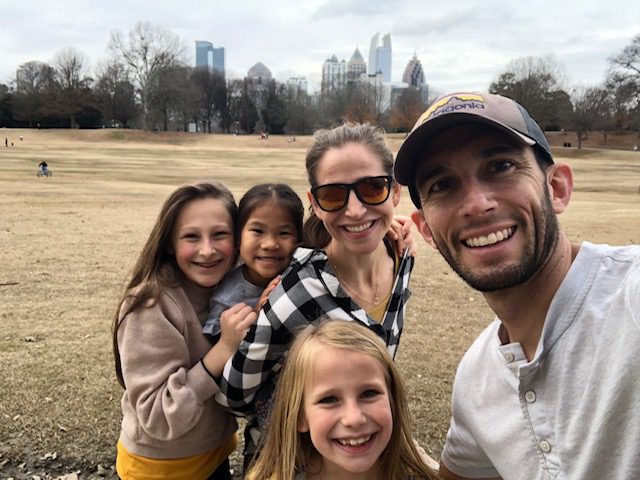

Perhaps one thing about Leeona that has surprised me the most is that she really is a kid. Even though this was my initial simplistic impression from her photograph the day we first saw her, this truth has been a surprise to me because the day we met her was the day that a deep darkness enclosed over my heart. There is immensely more to this part of the story than I can put here now, but the expectations that I put upon her while we waited failed me in a catastrophic way on Gotcha Day. On that day I convinced myself of the anti-truth: “She’s not a kid.” I thought she was something else, and I was crushed when I couldn’t understand it.
Preparing Your Heart
And this is where I will tell you that it is imperative that your child’s file merely be a means to prepare your heart to meet a little person. Period. The person you will meet does, in fact, have dreams, desires, needs, hopes, giftings, energy, preferences, and joy. But there must be a willingness to offer the time, patience, attention, patience, gentleness, patience, love, patience, intentionality, and patience needed to nurture those in your child. The theme here is patience. The blanket of trauma that inevitably has enveloped these children must be pulled back gently and with time. But they are children, created in the secret places of their mothers’ wombs, and they have dignity and value as precious kids. Wait and watch. They will play. We can finally see that the institution and the trauma of adoption couldn’t take away the kid in her. Her imagination was merely suppressed; now we see how greatly she utilizes those built-in dreams and ideas. The most powerful memory I have of this is how she played in the hotel in China versus how she plays now. In China, her big sisters, armed with an ample supply of super fun toys, sat down to play with her in ways that were second nature to them. Leeona was nearly catatonic, staring at the toys and then looking up at one of the girls and then staring at them. She would hold a block and tap it onto another one, slowly, almost as if unsure what to do with these colorful items she had been given. This reveals nothing of her intelligence; rather, she was cocooned in traumatic paralysis. This is why I say that to watch her play today is nothing short of a miracle for our family. Most might not see anything strange about how this five-year-old will play; we see a little girl that has had a light turned on in her life and is learning how to be the child she was created to be.
The last thing I want to share about our Leeona is how beautifully both she has yielded to, and has taught me to yield to this thing called “adoption.” Her first months with our family felt like just that: her first months with our family — like a guest, an addition to our four, an addendum. In fact, for a time I would inadvertently refer to all three of my daughters as “the girls, and Leeona.” Over time, through God’s healing work in all of us, Leeona has been grafted in. Because of God’s Word regarding our adoption into His family, I was slowly struck in my time with the Lord, over and over, by how completely the Father has united us to Himself. There is no distinction between us all; there is no asterisk beside those of us that weren’t raised to know Him or a special place for those that have generations of faithful believers in their family tree. God calls us unto Himself in adoption and it is finalized, sealed with the blood shed by Jesus Christ. The Lord tenderly softened my hardness of heart in my unintentional view of Leeona as other, just as He softened her heart to begin to trust in me as her mother, Rhodes as her father, and Ava and Elloree as her beloved sisters and friends. As we have been grafted into the family of God’s children, Leeona has been grafted into our family — there is no distinction now — she is one of us as if from the beginning. We have seen this play out in how she leans into her belonging. She knows her place is with us, our place is with her, and it is safe.
In every effort to portray my honest experience, I can say that when I saw her file, I wanted to see more than just that two-dimensional perspective of this person I now call my own. But I didn’t have the voices speaking into our process that would offer the raw, honest, authentic perspective that would have helped me to look more toward the unseen rather than the seen. Leeona is more than a diagnosis; she is a person beyond a paperwork file; she is deeper than the picture on the blue horsey toy thingy; I couldn’t have known that then — it would have been a tremendous help to be encouraged to pray even more for the patience needed, the eyes to see her, the heart to beat for her, and the spirit willing to put in the deeply difficult work of remembering that this girl I didn’t know yet as a real person, would be my daughter, would call me mama, and most definitely belonged in our family. If you need it, I hope these words are that encouragement and reminder to you as you wait.
